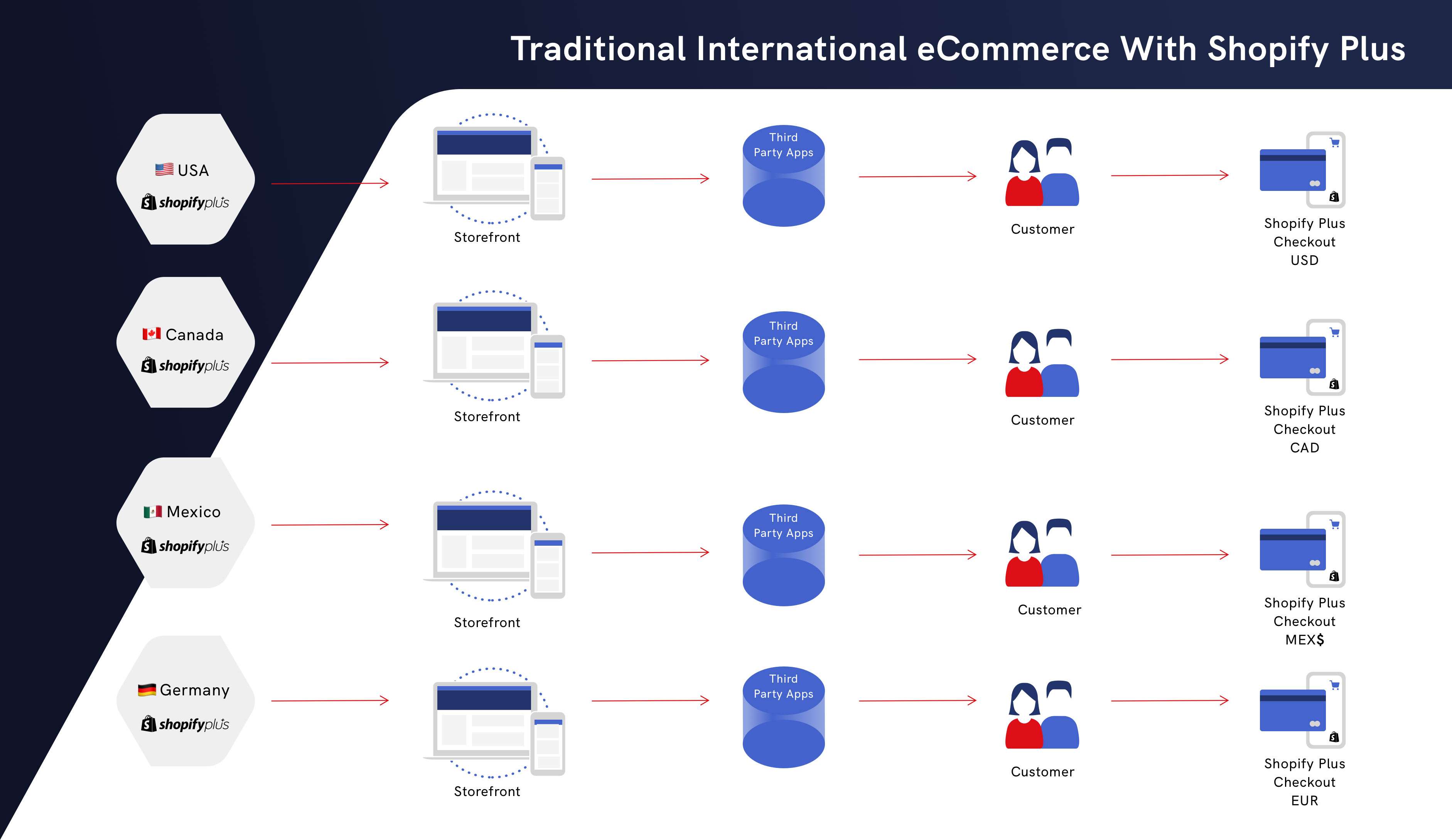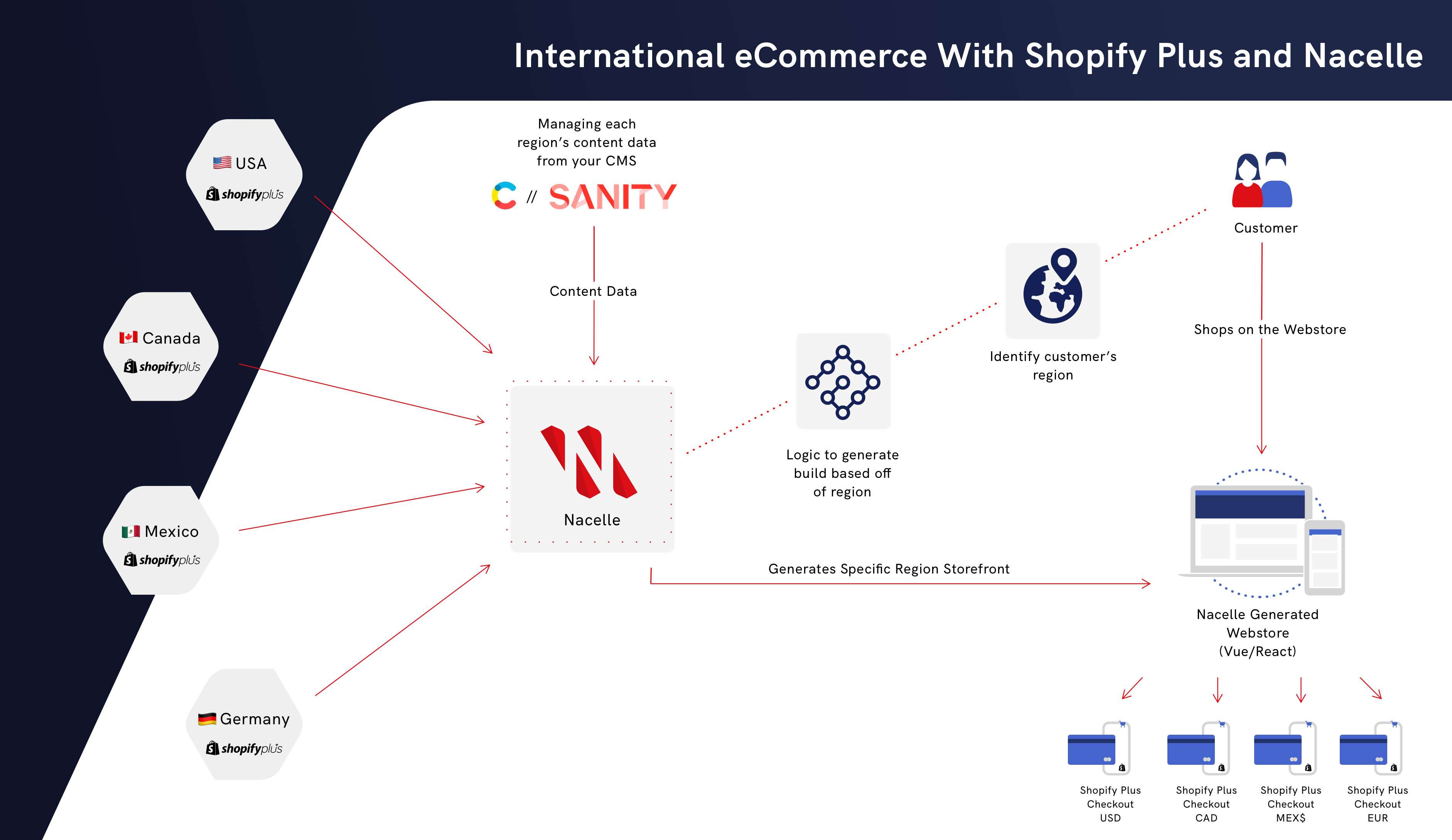Online shopping is a growing global phenomenon. Of the 7.7 billion people in the world, it’s expected that 2.1 billion of them will be digital buyers in 2021—more than one in four people around the globe.
It’s logical that as your eCommerce business scales, expanding into new regions could be a significant strategy for growth. The untapped potential for market share abroad could be worthwhile for your brand, especially if there is foreign demand for your products, brand values, and story.
However, the road to international eCommerce can be complicated and discouraging. Taxes, regulatory barriers, government tariffs, and high expenses are the top factors making global expansion harder for eCommerce companies.
For brands expecting to go global in the future, careful planning now can make the process easier—and workflows cleaner—when the time comes to cross borders. If you’re a merchant already selling in more than one location, it’s possible you’re currently dealing with some of the challenges and technical workarounds that come with the territory.
This article is here to tell you that international eCommerce doesn’t have to be a scary, monumental undertaking if you have the right tools in place. The combination of using Shopify Plus as your international eCommerce platform and a headless commerce solution built with international eCommerce in mind, can make selling your products in multiple markets accessible and manageable.
First, we’ll outline some of the traditional challenges that merchants face on the Shopify Plus platform when selling online in multiple countries. Then, we’ll explain how implementing a headless commerce solution into that strategy can alleviate common pain points. Grab your passport—let’s get your brand global.
International eCommerce challenges: Shopify Plus
We love Shopify Plus. It gives scaling SMB merchants and D2C brands the opportunity to present their products and story in a professional way on the frontend, and in a manageable way for dev teams on the backend. But it does present some common challenges for eCommerce merchants selling in more than one place, which you may be familiar with if you’re using Shopify Plus as your international eCommerce platform already.
Today, in order to sell abroad with Shopify Plus as it stands, you will require a Liquid Shopify Plus storefront for each country that you’re selling your products in. Each store will have its own codebase to manage. This leaves room for management complications and human error, especially as you expand your product offerings. Currency will also be handled through Shopify Plus at checkout.
mastering composable commerce

Managing multiple codebases for multiple stores can require duplicate teams to handle the burden or strain the existing workload and flow of your current dev, eCommerce, and marketing teams. From webstore content editing, to backend and frontend codebase management, the repetition of making changes or slight regional nuances across stores to products, images, text, or messaging complicates going global.
Having several stores can also have challenges for inventory management. When you start to sell your products in other countries, your business is susceptible to the rules and regulations of that country. For example, you may not be able to sell certain products in certain places, or you may face drastically different international shipping and supply chain landscapes depending on the region.
Pulling from the same pool of inventory while managing these different rules and codebases can become complicated. There are apps and add ons that are designed to help, but it can also turn into one more thing your team is tasked with supervising.
It’s also common that tech stack apps, add ons, and tools only apply to one store. If you want to duplicate the functionality across multiple stores, you must multiply the cost of the tool by the number of stores you have. This multiplication can skyrocket recurring expenses.
Shopify Plus does have functionality for taxes and international customs, but it’s not automatic and your team will need to configure the rules. This isn’t necessarily a negative, but it will require resources from your team.
In theory, having a Shopify Plus store for every region of business might be a preferred strategy for your international eCommerce approach, but that doesn’t mean you won’t feel the challenges.
If this structure is right for your business, pairing your international eCommerce platform with a headless commerce solution can ease pain points while keeping the integrity of your global eCommerce strategy intact.
How Headless impacts international eCommerce
The primary challenges with using Shopify Plus as your international eCommerce platform are rooted in the fact that each Liquid Shopify Plus store that you have will require its own codebase and respective management.
Headless commerce targets the heart of that issue and its pain points and challenges. With the right headless commerce platform, you can have one codebase to manage everything—one codebase for every store in every region.
The right headless commerce platform will unlock best-of-breed functionality including the ability to use top eCommerce tech stack tools such as content management system (CMS) solutions and product information management (PIM) solutions. The unifying nature of a headless commerce platform also allows these tools to be managed in one place, despite feeding into multiple stores.

One codebase for everything has huge implications for your development and merchandising teams, workflows, and international eCommerce transactions:
-
Management Strain and Human Error: Think of the manpower required to run one webstore and one codebase. Traditionally, the concept of expanding to another region—thus requiring another store—can create duplicate work and/or duplicate roles. The repetition of management and the increase in workload or personnel creates room for error. One codebase simplifies the entire operation: make universal changes once, by one person or team, and greatly reduce management time and the opportunity for mistakes.
-
Third Party Apps: As mentioned above, multiple codebases can require multiple iterations of the same eCommerce tools—an instance for each store—which can significantly increase your tech stack costs and management resources. The single codebase that headless commerce unlocks eliminates this issue entirely. You can purchase your tech stack tools once, use them across all your stores, and manage them in one place.
-
Content Variations: Once you’re selling your products in different locations, you’ll likely need to incorporate different content and multiple languages into your webstore experience. For example, the text on a hero image may need to be translated depending on where in the world your shopper is accessing your store. By using a headless commerce solution and best-of-breed CMS, you can configure your code to automatically present text based on locale.
-
Scalability: You’re using international expansion to grow your business. Headless commerce can be an opportunity to do that in an easier way, while minimizing the expense typically associated with such an undertaking. From the cost of tools, time, resources, and personnel requirements, the simplicity and ease created by headless commerce is reflected in scalability support.
Headless commerce addresses the specific challenges with using Shopify Plus as your international eCommerce platform, but it also extends the general benefits of headless commerce to all your stores.
The tangible results from site speed, mobile-first functionality, and superior shopping experiences are country-agnostic. Your online store, or stores, will benefit from headless commerce in general, regardless of the country.
Expect to see improved eCommerce KPIs including conversion rate, average order value, return on ad spend, and revenue. Your webstores will also be able to handle spikes in traffic around the clock without wavering in speed or performance. And with mobile traffic worldwide expected to grow at least 700% between 2016 and 2021, mobile-first functionality in any corner of the world is key.
Nacelle + international eCommerce
If you’re looking to expand your brand globally, Nacelle can be the headless commerce platform that helps alleviate pain points while delivering headless commerce benefits. With Nacelle you will have the one-codebase functionality that’s vital to making international eCommerce easier to navigate and execute. We remove the “middleman” to give you a simplified, faster experience.
Nacelle supports a best-of-breed strategy and operates as the central nervous system for your headless commerce operation. The platform ingests data from your tools including your CMS and eCommerce platform such as Shopify Plus, and enables the communication and flow of data between the various elements of your tech stack.
We’ll work with you no matter the approach to internationalization that’s right for you, and can help you with your eCommerce KPIs and goals near and far.
Next Read: Jamstack for eCommerce: The High-Level Perspective